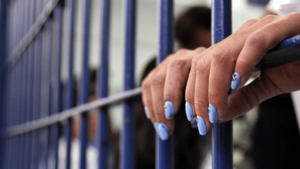Why We Need a Recession

Inflation is up. Not just a little. A lot. And according to the standard definition, the US is in a recession.
Working- and middle-class Americans have noticed. Everything from milk to toilet paper to automobiles and airline tickets are going up fast. And they are looking for someone or some thing to be angry with.
The conservative media are blaming the Biden administration and the Green New Deal for the state of the economy. And it’s going to worse, they say, because of the insane levels of unfunded spending by the Democrats to shore up their chances of doing well in the mid-terms. They cite the trillions spent during the first year of Biden’s presidency. And they are lambasting the Orwellian-named Inflation Reduction Act, pointing out that it will add at least another $600 billion of fuel to the inflation fire.
The Biden administration and the mainstream media are disputing both points. As to inflation, they point out that July’s numbers were down slightly from June’s. (About one-half of one percent.) And they are denying we are actually in a recession.
The standard definition of a recession is two consecutive quarters of lower GDP. This, in fact, did happen from January to June this year. But the Biden administration and the mainstream media and their pundits are noting that official unemployment rates are very low. How can we be in a recession when there are two jobs waiting for everyone that wants one?
It’s confusing. Doubly so because it is so political.
My take: Inflation is here to stay. But it’s not the fault of the Biden administration or the Democrats. Or rather, it’s not solely their doing. Inflation is the natural and inevitable response to what our government has been doing since Nixon unhooked the value of the dollar to the price of gold bullion in 1971. Since then, every administration, Democrat or Republican, has continued to print heaps of fake dollars. The only thing one can fairly and accurately state about this is that the overspending has accelerated drastically since 2008. Today, federal debt exceeds $30 trillion.
What most people don’t realize is that the government can’t magically make that debt disappear. It has to “balance” its books by finding money to pay off the interest on it. It does so by selling Treasury bills. To attract buyers for those bills, it has to offer an attractive interest rate by raising the federal lending rate. Which the Fed is currently doing.
The problem is that when you raise the federal interest rate, you make it more expensive for everyone – banks, businesses, and even the government – to do their business. That means charging more for loans, products, and services, which has to be paid for by taxpayers. Both commercial taxpayers and working people. Those rising costs result in less business growth and less consumer spending. And that, my friends, leads to continuing higher prices, lower economic growth, and higher unemployment.
That’s the bind the US finds itself in now. There is no magic cure. The fiddler must be paid. And it’s done in two ways: inflation and/or recession.
That’s how I see it. In a future issue, I’ll tell you what I’ve done (and am still doing) to protect myself and my family from what seems inevitable.
Meanwhile, I found what I thought was a very clear and simple explanation of all this by Ramin Nakisa from PensionCraft. He believes that the Fed will continue to battle inflation by raising interest rates. That will prolong and possibly deepen the current recession. But he also believes that a moderate amount of inflation is not such a bad thing.
You can hear his argument here.
How College Broke the American Dream

For decades, a college degree has been considered the ticket to a better life. And for decades, quality-of-life studies verified that idea. College-educated kids not only earned a good deal more money than their less-educated peers, they lived better, had better health, and lived longer. So did their children. And so, for decades, parents and students willingly went into debt to achieve those advantages.
As the years passed, however, the costs of a higher education increased at rates well above inflation. Today, the total student loan debt is at $1.8 trillion! That’s not good for the economy.
First-year college-educated kids still earn a good deal more than kids with a high-school diploma. But do they earn enough over their careers to take on a six-figure level of debt? Parents are worried. And rightly so. Recent studies have shown that some degrees – e.g., in engineering and medicine – are still financially justified. But as for kids that go on to become teachers and social workers and speech therapists, the numbers look grim
Click here to read a CNBC article on the subject.
And click here to watch Charles Mizrahi interview Will Bunch, the author of How College Broke the American Dream and Blew Up Our Politics.



